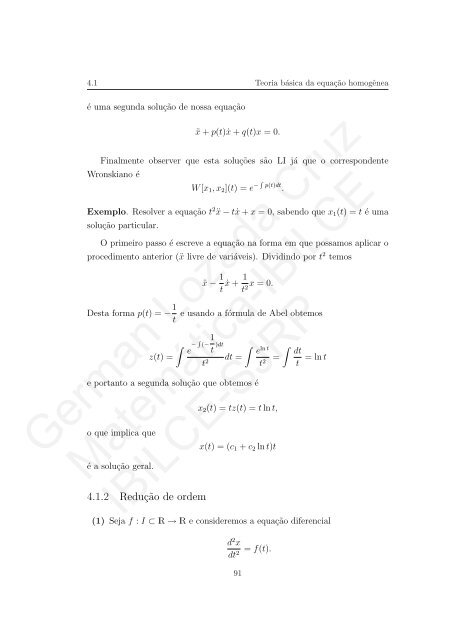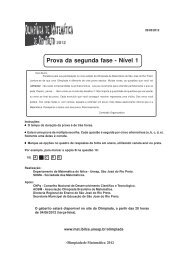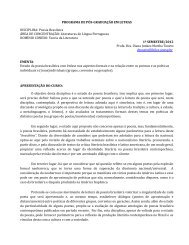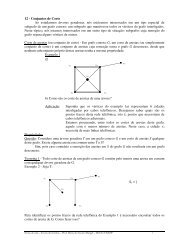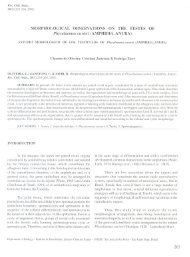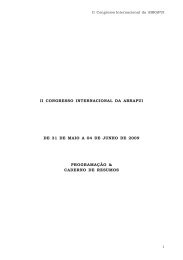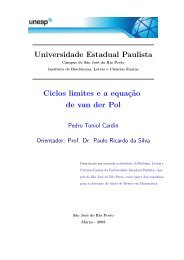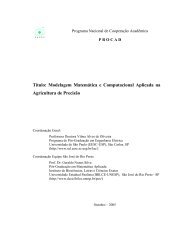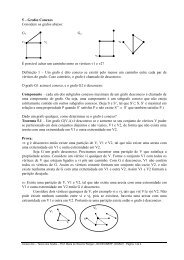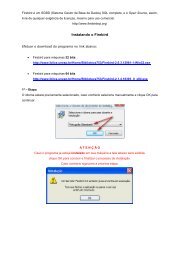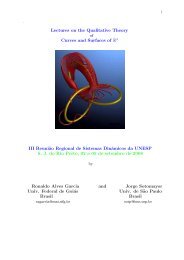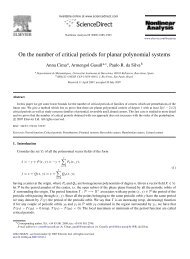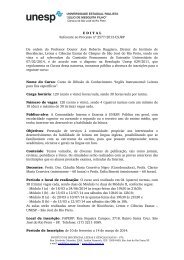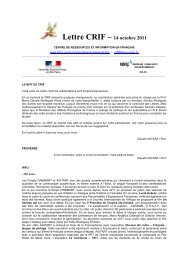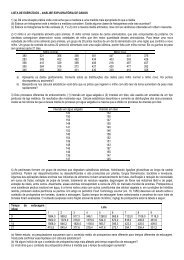Equações Diferenciais Ordinárias (notas de aula) - Unesp
Equações Diferenciais Ordinárias (notas de aula) - Unesp
Equações Diferenciais Ordinárias (notas de aula) - Unesp
You also want an ePaper? Increase the reach of your titles
YUMPU automatically turns print PDFs into web optimized ePapers that Google loves.
4.1 Teoria básica da equação homogêneaé uma segunda solução <strong>de</strong> nossa equaçãoẍ + p(t)ẋ + q(t)x = 0.Finalmente observer que esta soluções são LI já que o correspon<strong>de</strong>nteWronskiano éW [x 1 , x 2 ](t) = e − ∫ p(t)dt .Exemplo. Resolver a equação t 2 ẍ − tẋ + x = 0, sabendo que x 1 (t) = t é umasolução particular.O primeiro passo é escreve a equação na forma em que possamos aplicar oprocedimento anterior (ẍ livre <strong>de</strong> variáveis). Dividindo por t 2 temosDesta forma p(t) = − 1 tẍ − 1 t ẋ + 1 t 2 x = 0.e usando a fórmula <strong>de</strong> Abel obtemos∫ − ∫ 1(−e t )dt ∫ eln t∫ dtz(t) =dt = =t 2 t 2 t = ln te portanto a segunda solução que obtemos éx 2 (t) = tz(t) = t ln t,German Lozada CruzMatemática-IBILCEIBILCE-SJRPo que implica queé a solução geral.4.1.2 Redução <strong>de</strong> or<strong>de</strong>mx(t) = (c 1 + c 2 ln t)t(1) Seja f : I ⊂ R → R e consi<strong>de</strong>remos a equação diferenciald 2 xdt 2= f(t).91


